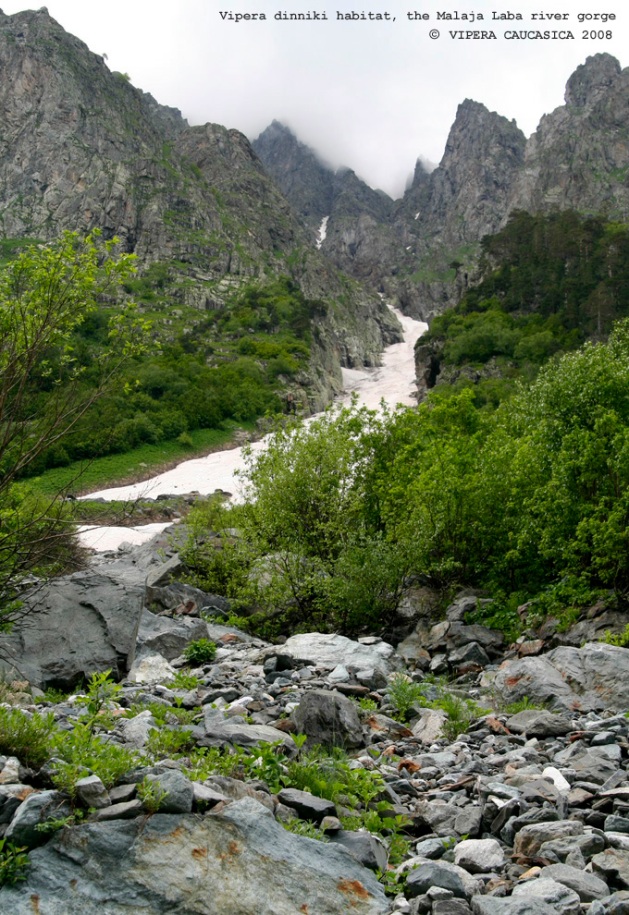This is a small vipers with an average length of 50 cm.
Repartition:
Habitat:

(pics: L. Darafayenka/viperacaucasica.com)
It inhabits the upper-forest zone, stream borders, shrub forests, subalpine and alpine meadows, rocky scree, talus slopes and montane moraines. It ranges between 1,500 and 2,800m asl.
Diet:
lizards (Darevskia, Lacerta sp.),rodents (Apodemus agrarius, Apodemus uralensis, Sicista caucasica, Microtus majori, Soricidae sp.) and sometimes birds. the young feed on orthoptera and young lizards.
Reproduction:
Viviparous. The period of reproduction occurs in the end of April - May, with the young appearing in August - September. The female gives birth to between 3 and 7 young.
Hibernation:
from september/october to april/June.
Conservation and threats:
This species was included into the Red Data Books of USSR (1984) and Georgia (1982). At present, it is included in the Red Data Book of Russian Federation (2001) with the status and category 2 (as an endemic of high mountains of Great Caucasus). Populations occur in the Caucasian State Biosphere Reserve, Sochi National Park, Ineritza Relict National Park, Lagodejia Reserve, Tebergin Biosphere Reserve, Nozacetian State Reserve, Kobaljini High Mount. Reserve, Preelbrusia Mountain National Park, and in several additional lower level protected areas.
This species is threatened by the degradation of its subalpine pasture habitats by intensive overgrazing by cattle. In areas of tourism this snake (and other vipers) is often killed. The species is additionally overcollected for the pet trade.
(source: IUCN red list)
Article:
three species of the kaznakovi complex







Aucun commentaire:
Enregistrer un commentaire